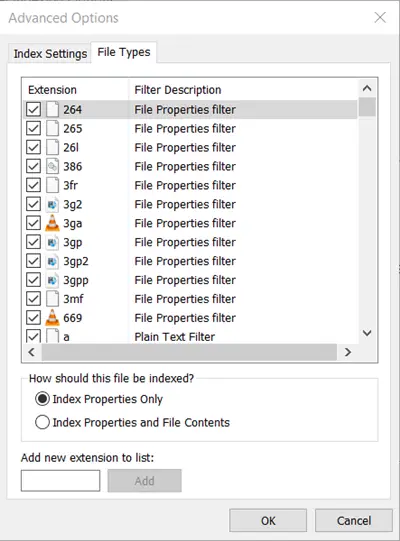the Windows Search the function makes the task of finding files and folders on your Windows PC incredibly fast but sometimes the function may not work as you want. Many believe that this happens mainly when Windows starts to index files. Is it true? So what is indexing in Windows 10 and how does it affect the search function?
What is Seach indexing in Windows 10
In Windows OS, the process of viewing files, emails, and other content on your PC and cataloging their information, such as the words and metadata it contains, is called indexing. Indexing content stored on your PC allows you to get results faster by looking up a term index. Initially, when the indexing process runs, the process can take up to a few hours. Thereafter, it runs silently in the background of your PC and simply re-indexes the updated data. Consider the following aspects:
- How does indexing affect search in Windows 10?
- Types of files that can be indexed
- How much of the information in a file is indexed?
- How much space is used by the index?
- Where is the index information stored?
- Why does indexing always run on a PC?
1) How does indexing affect search in Windows 10
Much like a book index, a well-designed digital index can help quickly direct the user to the information they are looking for by searching for common properties. Additionally, it will return with the most valid results in seconds. In the absence of indexing, the process may take a few minutes for the same operation to complete. So, indexing speeds up search results!
On the other hand, many apps in the Microsoft Store also, depending on the index, to provide up-to-date search results for your files and other content. Disabling indexing for Microsoft Store can cause apps to slow down or malfunction. It depends on the degree of dependence of these applications on the indexing function.
Choosing not to index the contents of files can reduce the size of the index. However, this can make the process of finding files more difficult.
2) Types of files that can be indexed

In addition to files with names, files showing certain properties or metadata present in certain binary formats such as DOC or PDF can be indexed. The & #39;File types"Tab"Advanced indexing options"Can be used to include or exclude certain types of files from search, as well as their content and properties. To see how this is done, see our article on Windows Search Indexer and tips & tricks 39; indexing.
Additionally, the apps you choose to install on your PC can add their own information to the index to speed up the search. Services such as Outlook adds all synchronized emails to a machine to the default index. It uses the same index to search in the app.
All properties of your files, including file names and full paths, are indexed by default.
3) How much of the information in a file is indexed?
There are two ways to decide how much of a file can be indexed –
- Properties only
- Properties and content
For the former, indexing will not look at the contents of the file. It will simply allow a search by file name.
4) How much space is used by the index?
The indexing process can occupy the available space if there are many small files. The size of the index will increase considerably in proportion to the size of the files.
In a usual scenario, the index will be less than 10% of the size of the indexed files. For example, if you have 1 GB of text files, the index of these files will be less than 100 MB.
5) Where is the index information stored?
All information or data collected via indexing is stored locally on your PC in the following location:
C: ProgramData Microsoft Search
If necessary, you can change the location of the Windows search index.
None of the information is sent to Microsoft or outside of your computer. However, the apps you choose to install on your PC may have access to the index data on your PC. So it is necessary to be careful when installing something from the outside. it is best to make sure the source is reliable.
Windows.edb is the Windows Search Service database file, which provides content indexing, property caching, and search results for files, email, and other content. .
6) Why does indexing always run on a PC?
The purpose of indexing is to constantly track changes to files and keep up to date with the latest information. As such, it can open recently modified files, identify changes made to them, if any, and update the index with the latest information. But sometimes the search indexer consumes high disk or processor usage.
POINT: Check this article if the Windows search indexer does not work.
